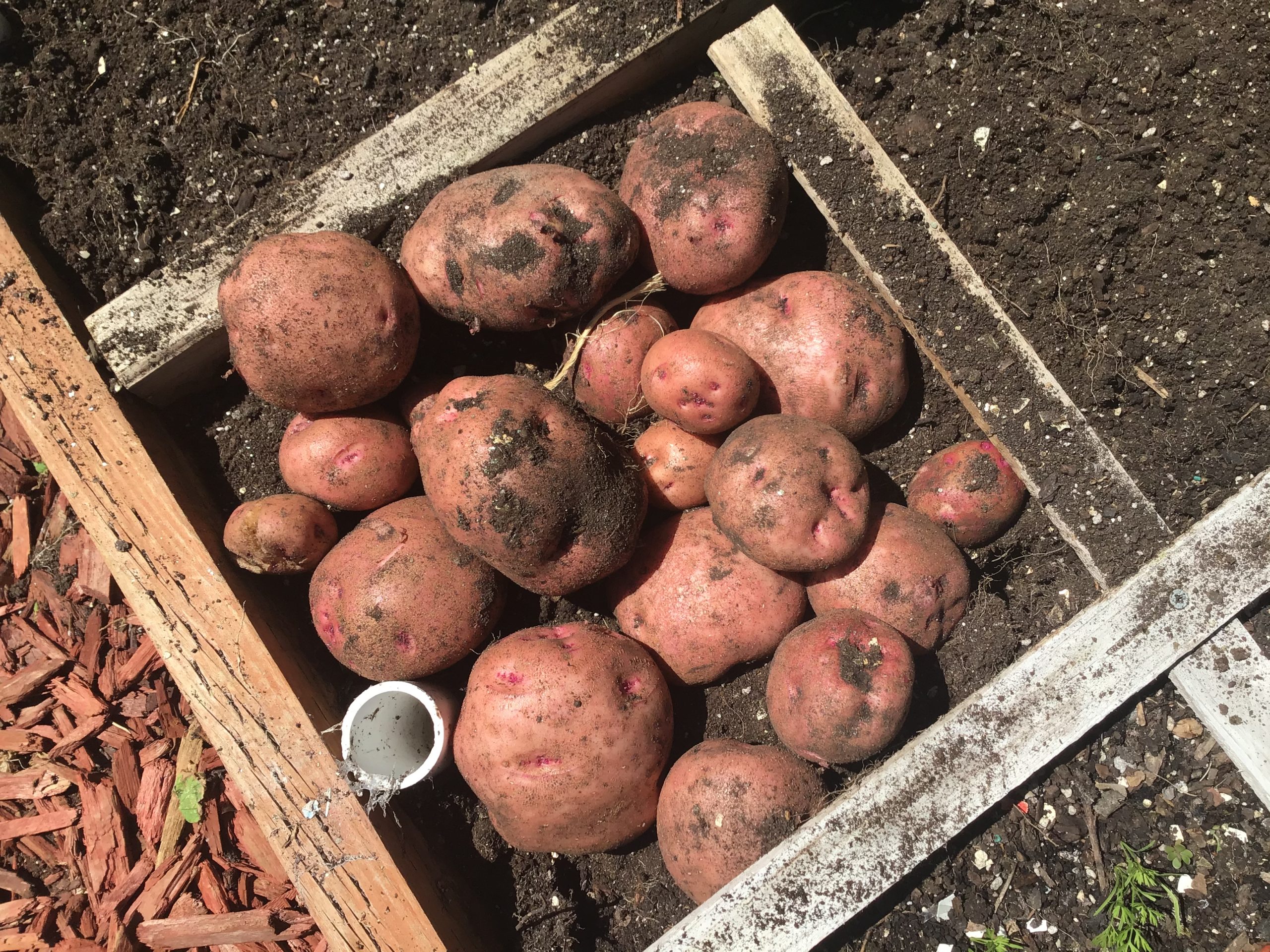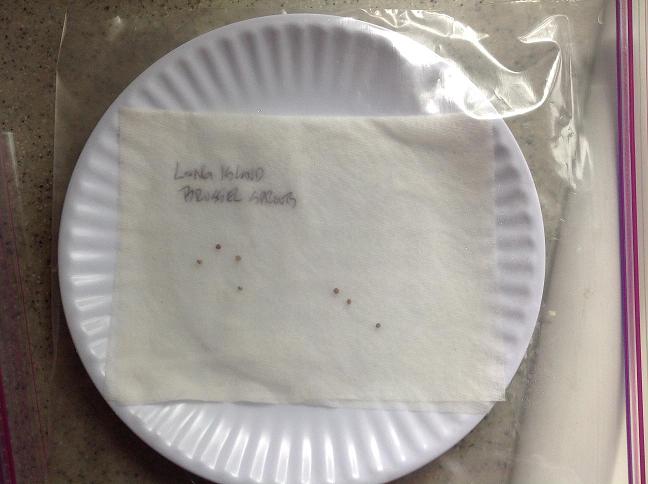 It’s hard to believe but fall isn’t too far away. Right now is the time to start a few things indoors that you’ll transplant to your garden in 6 weeks. For me, that’s brussel sprouts and leeks. Be sure to look at the maturation dates for leeks-I’ve got 3 varieties that all have harvest dates of 90, 110, and 120 days. I like to start brussel sprouts inside on the last week of June. In 6 weeks they’ll be ready for transplanting and will be a good size. That puts me in the 2nd week of August which is when all the pests begin to go away-in this case aphids. This crop loves the cooler weather and in fact tastes better after a hard freeze. There’s several crops this happens with. When you sprout the seeds first I think you save a lot of time(and seeds)by knowing which seeds will grow. Then you put them in your potmaker cups and you’re off and running. These will sprout in about 3 days. If all seven seeds sprout, I’ll give a few of them away. We only need 1 plant to feed 2 of us but I’ll end up growing 3 or 4 to make sure I’ve got enough for customers. For leeks I’ll do the same thing. My favorite varieties are Bandit and Megaton. At a later date I’ll show you my technique for getting a large part of your leek to be white without all the extra work of hilling.[ois skin=”below post”]
It’s hard to believe but fall isn’t too far away. Right now is the time to start a few things indoors that you’ll transplant to your garden in 6 weeks. For me, that’s brussel sprouts and leeks. Be sure to look at the maturation dates for leeks-I’ve got 3 varieties that all have harvest dates of 90, 110, and 120 days. I like to start brussel sprouts inside on the last week of June. In 6 weeks they’ll be ready for transplanting and will be a good size. That puts me in the 2nd week of August which is when all the pests begin to go away-in this case aphids. This crop loves the cooler weather and in fact tastes better after a hard freeze. There’s several crops this happens with. When you sprout the seeds first I think you save a lot of time(and seeds)by knowing which seeds will grow. Then you put them in your potmaker cups and you’re off and running. These will sprout in about 3 days. If all seven seeds sprout, I’ll give a few of them away. We only need 1 plant to feed 2 of us but I’ll end up growing 3 or 4 to make sure I’ve got enough for customers. For leeks I’ll do the same thing. My favorite varieties are Bandit and Megaton. At a later date I’ll show you my technique for getting a large part of your leek to be white without all the extra work of hilling.[ois skin=”below post”]
Tag Archives: leeks
A great question
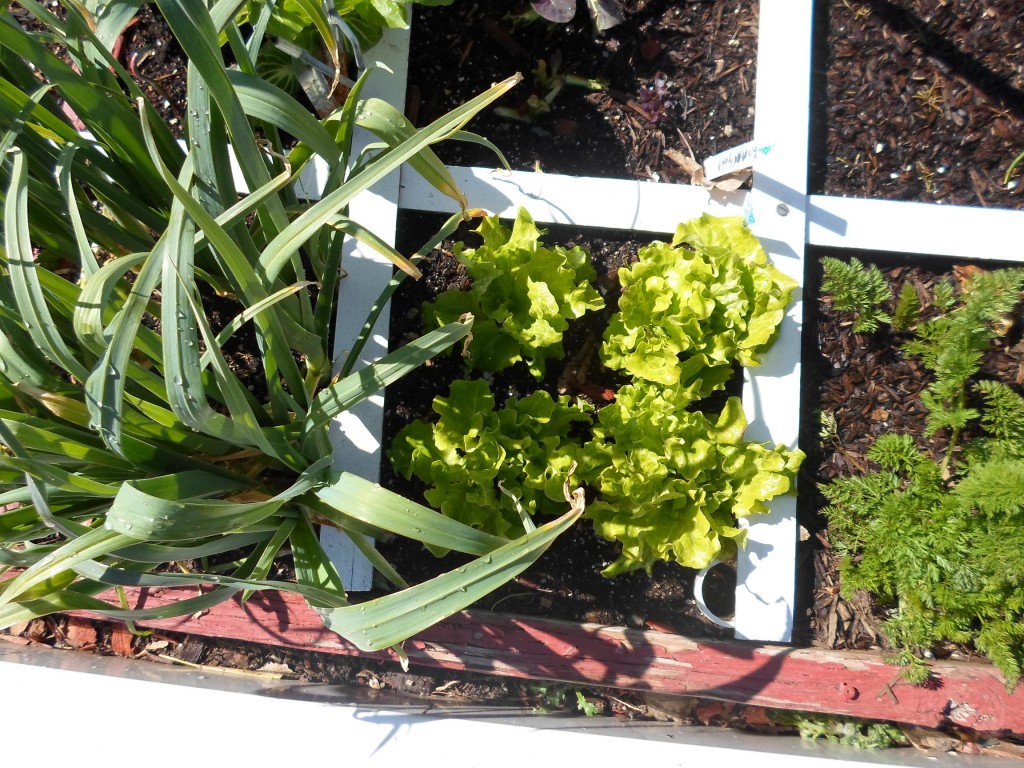 One of the participants in our SFG workshop today asked about putting together a SFG garden box that will be placed on cement. We talked about how to put plywood on the bottom of the box and then to screw(not nail)it down. Then fill it with soil,add a grid and start planting. “What about earthworms? How will I get earthworms in my box if it’s got a bottom and its on cement?” It’s a good question. Regardless of folks claiming that yard worms are different than garden worms, or that red worms are different that brown worms, the thing to look at is this: what’s the purpose of earthworms? Easy-they do two things that are important. First, they aerate the soil. Second, they leave behind their castings which act as a fertilizer. When this new box is built, there will certainly be no earthworms in the soil. However, the benefits of earthworms are already met with Mel’s mix. We already have a light and very fluffy soil(takes care of issue one), and we have 33% or organic growing medium(takes care of issue two.) Earthworms aren’t a necessary part of a SFG because of these two points. But, as you add your own homemade compost when amending soil throughout the year, you’ll end up with earthworms in your Mel’s mix anyway. It will just take some time. This is an example of how simple and easy the SFG system is. You don’t need to know the first thing about gardening to make it work. No need to make thing complex, after all, it’s soil, a seed, water, and sun. Build a box, fill it with soil, add a grid, start planting. Spacing is 1, 4, 9, 16. Rotation is any combination of fruit/root/leaf crops. How simple can it get? Anybody can do it when it’s this easy. Picture is megaton leeks and black seeded simpson lettuce. All looking good and getting close to harvest….yum, yum.
One of the participants in our SFG workshop today asked about putting together a SFG garden box that will be placed on cement. We talked about how to put plywood on the bottom of the box and then to screw(not nail)it down. Then fill it with soil,add a grid and start planting. “What about earthworms? How will I get earthworms in my box if it’s got a bottom and its on cement?” It’s a good question. Regardless of folks claiming that yard worms are different than garden worms, or that red worms are different that brown worms, the thing to look at is this: what’s the purpose of earthworms? Easy-they do two things that are important. First, they aerate the soil. Second, they leave behind their castings which act as a fertilizer. When this new box is built, there will certainly be no earthworms in the soil. However, the benefits of earthworms are already met with Mel’s mix. We already have a light and very fluffy soil(takes care of issue one), and we have 33% or organic growing medium(takes care of issue two.) Earthworms aren’t a necessary part of a SFG because of these two points. But, as you add your own homemade compost when amending soil throughout the year, you’ll end up with earthworms in your Mel’s mix anyway. It will just take some time. This is an example of how simple and easy the SFG system is. You don’t need to know the first thing about gardening to make it work. No need to make thing complex, after all, it’s soil, a seed, water, and sun. Build a box, fill it with soil, add a grid, start planting. Spacing is 1, 4, 9, 16. Rotation is any combination of fruit/root/leaf crops. How simple can it get? Anybody can do it when it’s this easy. Picture is megaton leeks and black seeded simpson lettuce. All looking good and getting close to harvest….yum, yum.
[ois skin=”below post”]
Step 4: Start planting!
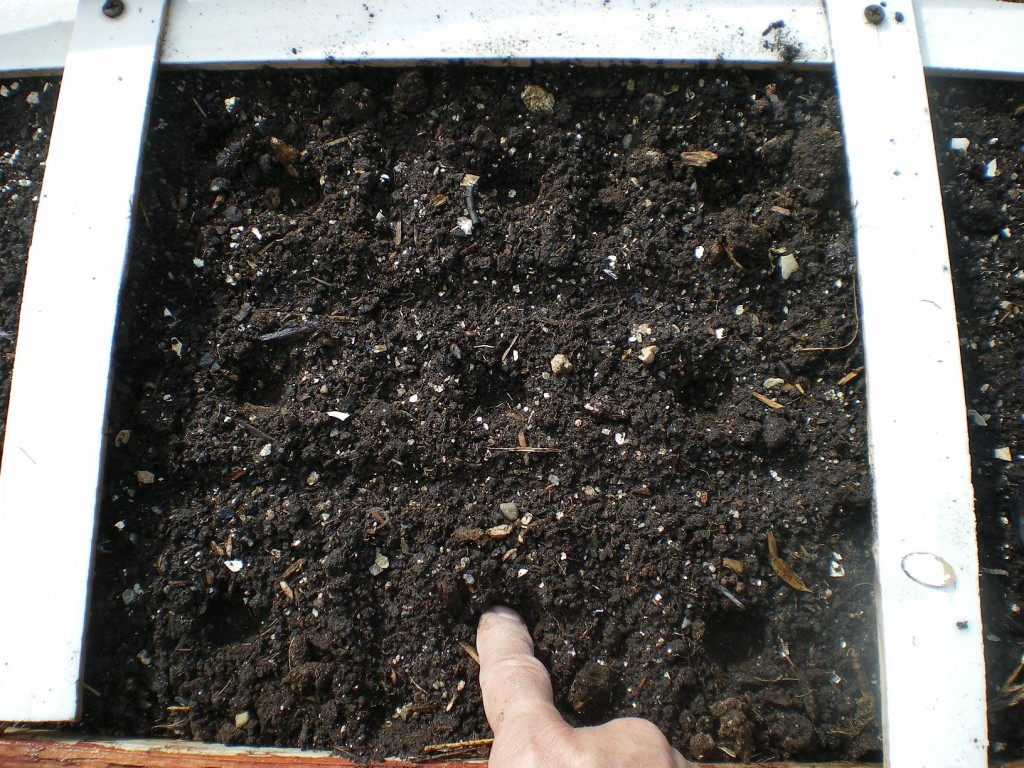
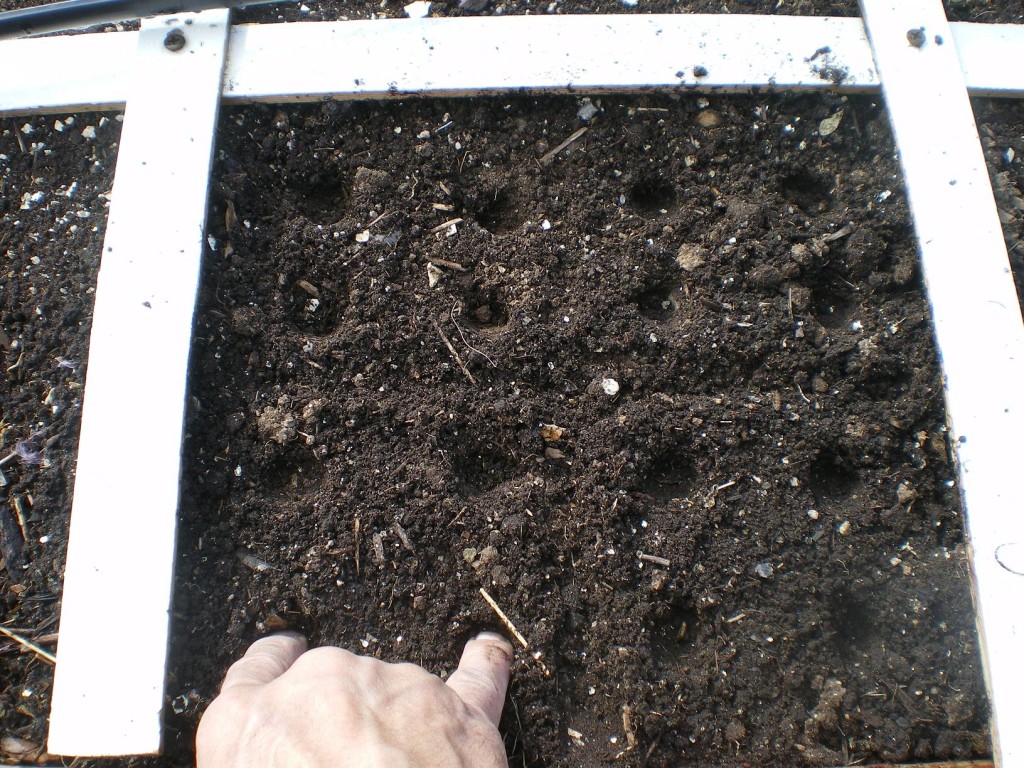 It’s that easy! This is all you need to have a great garden. Now all that’s left is the spacing. In the SFG system, this is simple too. As a general rule things will be planted in 1, 4, 9, or 16 items per square. You’ll know by what the seed packet lists as the “thin to” spacing. As an example, broccoli will say “thin to 12.” This means there will be one broccoli plant per square. If you’re using transplants it’s easy-just drop it in the middle of your square. If you’re using seeds, you only need to add 2 or 3 seeds into each hole. That’s it! If all 3 of those seeds grow you can either cut them back with a scissors(a tough thing to do)or you can gently come under the early starts with a pencil and carefully lift them out. You now have another broccoli plant that’s germinated and can become a full plant. If the packet says “thin to 6 inches” you will plant 4 items per square. “Thin to 4 inches” will mean you’ll plant 9 items per square, and the last one-“thin to 3 inches” means you’ll be planting 16 items per square. The following is a short list of the spacing used in the SFG system. One per square: broccoli, cauliflower, eggplant, tomatoes, kale, brussel sprouts, basil, rosemary, and cabbage. Four per square: all lettuce, chard, pok choi, radicchio, arugula, marigolds, nasturtium, and cilantro. Nine per square: beets, leeks, chives, spinach, garlic, onions, mizuna, tatsoi, kohlrabi, and bush beans. Sixteen per square: radishes, turnips, parsnips, carrots, mache, and scallions. Keep your soil moist-especially at the beginning and you’ll be rewarded with a garden that you never knew could be so much fun and so little work.[ois skin=”below post”]
It’s that easy! This is all you need to have a great garden. Now all that’s left is the spacing. In the SFG system, this is simple too. As a general rule things will be planted in 1, 4, 9, or 16 items per square. You’ll know by what the seed packet lists as the “thin to” spacing. As an example, broccoli will say “thin to 12.” This means there will be one broccoli plant per square. If you’re using transplants it’s easy-just drop it in the middle of your square. If you’re using seeds, you only need to add 2 or 3 seeds into each hole. That’s it! If all 3 of those seeds grow you can either cut them back with a scissors(a tough thing to do)or you can gently come under the early starts with a pencil and carefully lift them out. You now have another broccoli plant that’s germinated and can become a full plant. If the packet says “thin to 6 inches” you will plant 4 items per square. “Thin to 4 inches” will mean you’ll plant 9 items per square, and the last one-“thin to 3 inches” means you’ll be planting 16 items per square. The following is a short list of the spacing used in the SFG system. One per square: broccoli, cauliflower, eggplant, tomatoes, kale, brussel sprouts, basil, rosemary, and cabbage. Four per square: all lettuce, chard, pok choi, radicchio, arugula, marigolds, nasturtium, and cilantro. Nine per square: beets, leeks, chives, spinach, garlic, onions, mizuna, tatsoi, kohlrabi, and bush beans. Sixteen per square: radishes, turnips, parsnips, carrots, mache, and scallions. Keep your soil moist-especially at the beginning and you’ll be rewarded with a garden that you never knew could be so much fun and so little work.[ois skin=”below post”]
Leeks
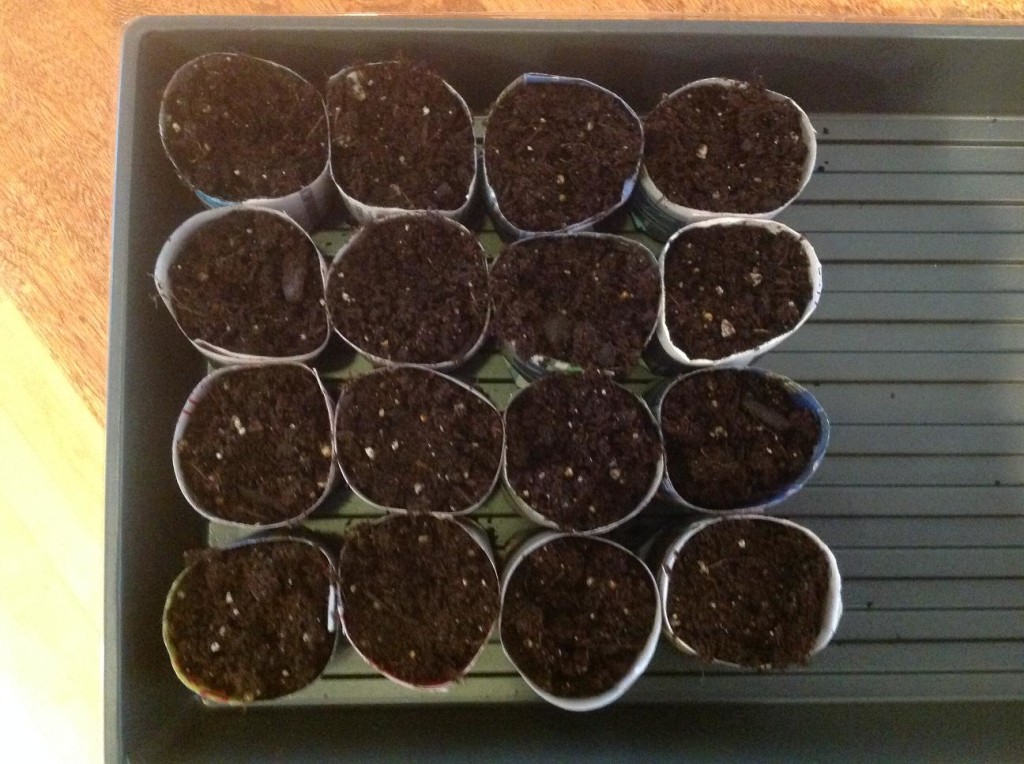 I like to take some time and think ahead of what I want to eat and when I want it. Take leeks as an example. I grow three different varieties that mature at different times-one finishes in 90 days, another 110, and the last one in 120 days. You can’t direct seed leeks in February in Utah-they wont make it. When you do direct seed leeks in the garden, you have to “hill” them as they get longer. The reason for this is the most coveted section of the leek-the white shank. If you don’t hill them you’ll end up with just a small section of white. I don’t have time for that so I start them inside and then place them in the garden in small holes that are 8-9 inches deep. In this way we’re able to get a solid section of white that’s just delicious. The variety pictured here is Megaton and it matures in 90 days. That means they’ll be finished by early to mid April-perfect for me and my customers. Think ahead to crops that take a long time to mature and start to plant some of them inside. It’s just a timing thing for me.
I like to take some time and think ahead of what I want to eat and when I want it. Take leeks as an example. I grow three different varieties that mature at different times-one finishes in 90 days, another 110, and the last one in 120 days. You can’t direct seed leeks in February in Utah-they wont make it. When you do direct seed leeks in the garden, you have to “hill” them as they get longer. The reason for this is the most coveted section of the leek-the white shank. If you don’t hill them you’ll end up with just a small section of white. I don’t have time for that so I start them inside and then place them in the garden in small holes that are 8-9 inches deep. In this way we’re able to get a solid section of white that’s just delicious. The variety pictured here is Megaton and it matures in 90 days. That means they’ll be finished by early to mid April-perfect for me and my customers. Think ahead to crops that take a long time to mature and start to plant some of them inside. It’s just a timing thing for me.
[ois skin=”below post”]
In 148 square feet?
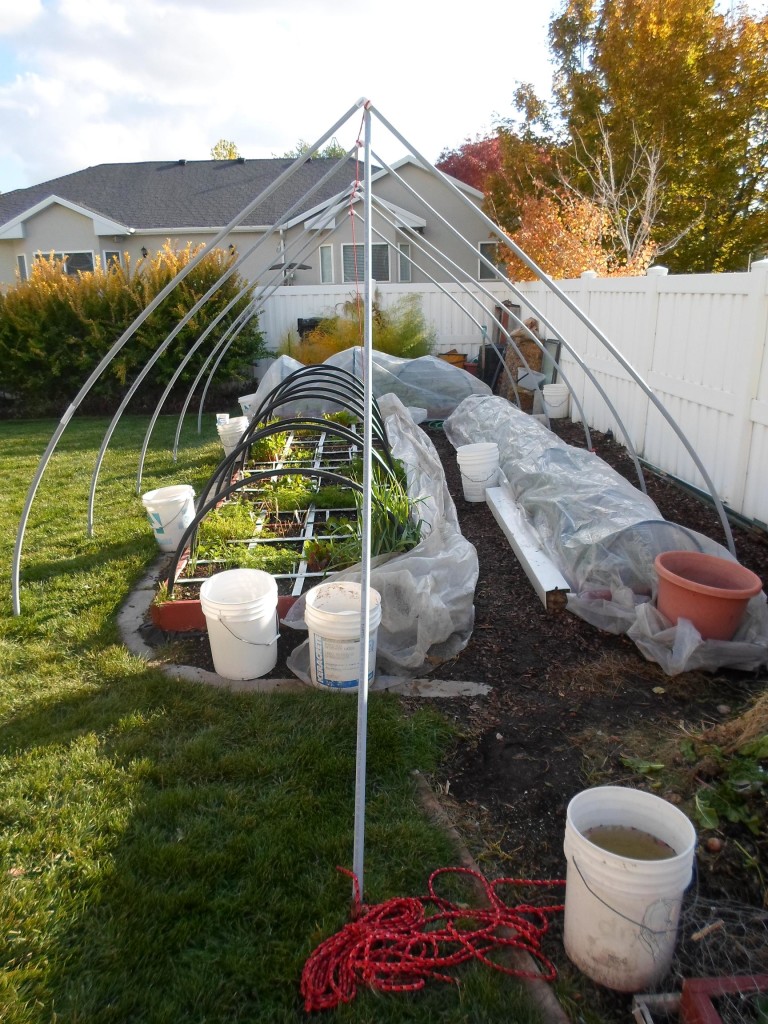 We’ve had 3 or 4 significant frosts already. I’m getting ready to cover this structure with greenhouse plastic. I’ll only then be using a weighted floating row cover to put over the crops. As we head into winter, this is what’s growing in just 148 square feet of garden space: 20 pounds of potatoes, 108 heads of lettuce, 8 arugula plants, 320 carrots, 117 spinach plants, 36 mizuna plants, 45 claytonia plants, 4 minutina, 24 komatsuna, 27 mache, 80 radishes, 36 beets, 48 turnips, 44 Swissl chard, 9 onions, 36 chives, 16 radicchio, 63 leeks, 2 kale plants, 20 poc choi, 2 parsley plants, 1 rosemary plant, 45 tatsoi, 36 kohlrabi, and 4 plants of cilantro. We’re ready.
We’ve had 3 or 4 significant frosts already. I’m getting ready to cover this structure with greenhouse plastic. I’ll only then be using a weighted floating row cover to put over the crops. As we head into winter, this is what’s growing in just 148 square feet of garden space: 20 pounds of potatoes, 108 heads of lettuce, 8 arugula plants, 320 carrots, 117 spinach plants, 36 mizuna plants, 45 claytonia plants, 4 minutina, 24 komatsuna, 27 mache, 80 radishes, 36 beets, 48 turnips, 44 Swissl chard, 9 onions, 36 chives, 16 radicchio, 63 leeks, 2 kale plants, 20 poc choi, 2 parsley plants, 1 rosemary plant, 45 tatsoi, 36 kohlrabi, and 4 plants of cilantro. We’re ready.
[ois skin=”below post”]
